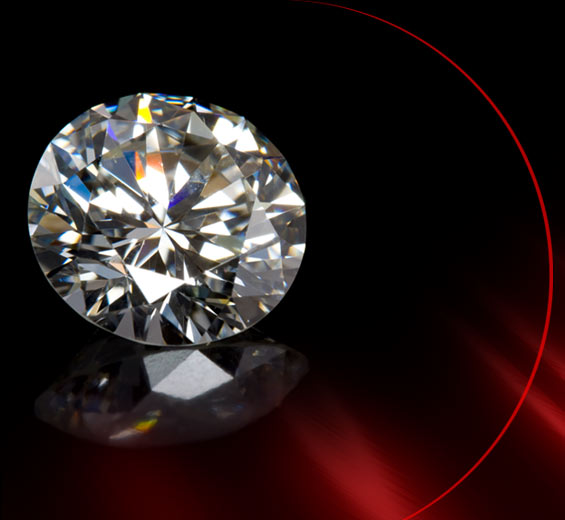Cut
A diamond's sparkle and brilliance are determined by the precision with which it was cut, therefore this characteristic is the most important. The following three factors define a diamond's cut: brightness - the diamond's total reflected light, fire -the diffusion of light into a spectrum of colors, and scintillation - the resulting sparkle that occurs when light flashes through a moving diamond. When a diamond is cut to the proper proportions, light reappears out of the top of the diamond; if cut too shallow, light seeps out of the bottom; if cut too deep, the light is discharged from the side.
The Hearts and Arrows designation is conferred upon the round brilliant diamond that boasts perfect symmetry and angles and gives the visual effect of eight perfectly symmetrical hearts when viewed from the bottom, and a pattern of eight symmetrical arrows when examined from the top.
Clarity
Almost all diamonds have tiny imperfections. This aspect refers to the absence of internal inclusions or external blemishes. Diamonds are given a clarity grade that ranges from flawless (FL) to diamonds with more prominent imperfections (I3). Factors taken into consideration are the size, nature, position, color or relief, and quantity of clarity characteristics visible under 10x magnification.
Color
The less color a diamond has – the greater the value. Excluding fancy-color diamonds, most stones range from colorless to near colorless. Color distinctions between varying diamonds are often so slight that they are imperceptible to most – but these subtle color differences significantly affect diamond quality and price. A color grade of D is the highest possible, while Z is the lowest.
Carat
A carat is specifically a measure of a diamond's weight and not its size. To understand diamond size, carat weight should be considered in conjunction with two other criteria:
• Distance in millimeters across the top of the diamond.
• Diamond's cut grade




